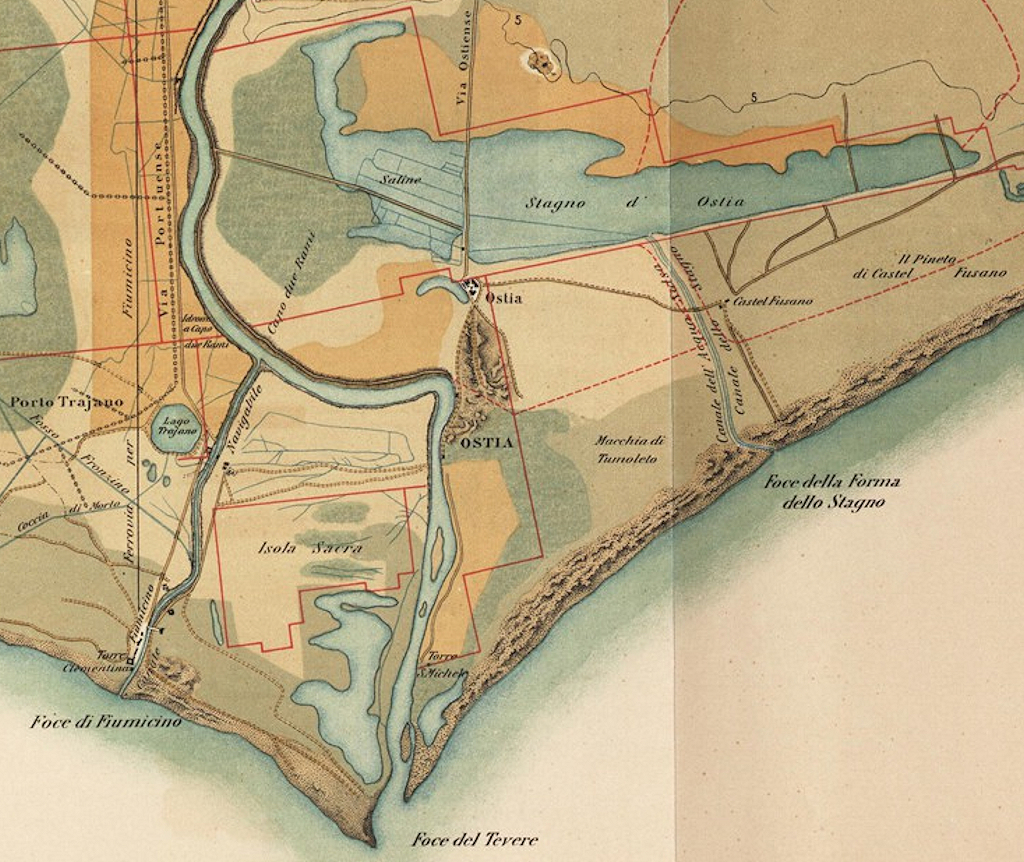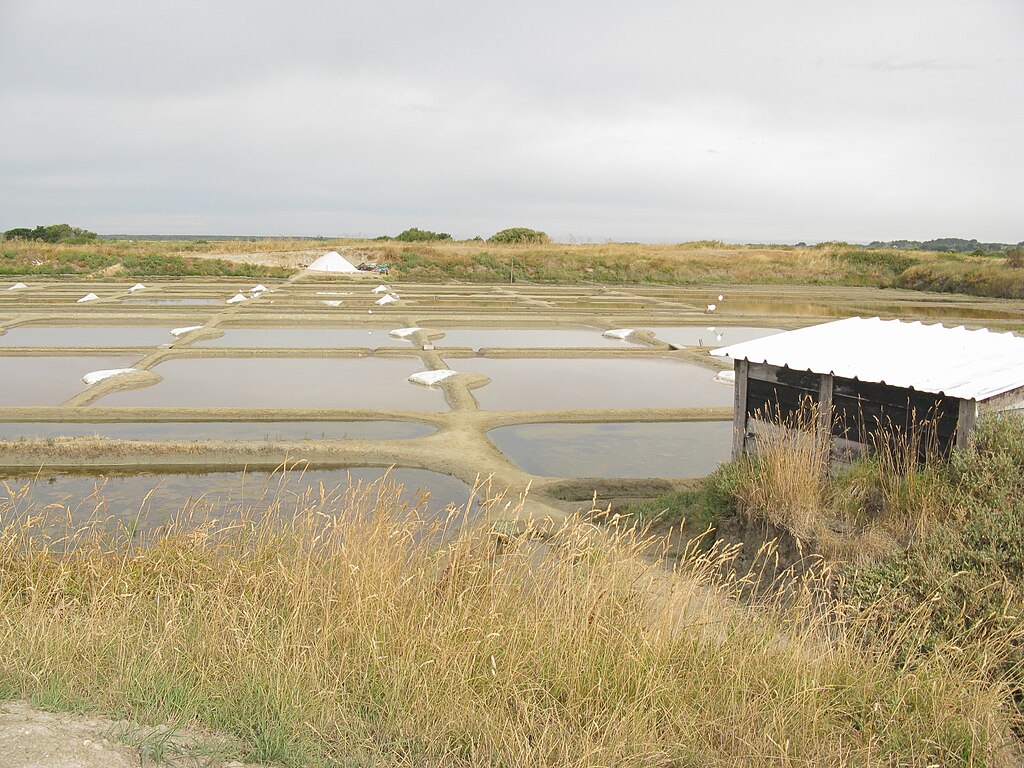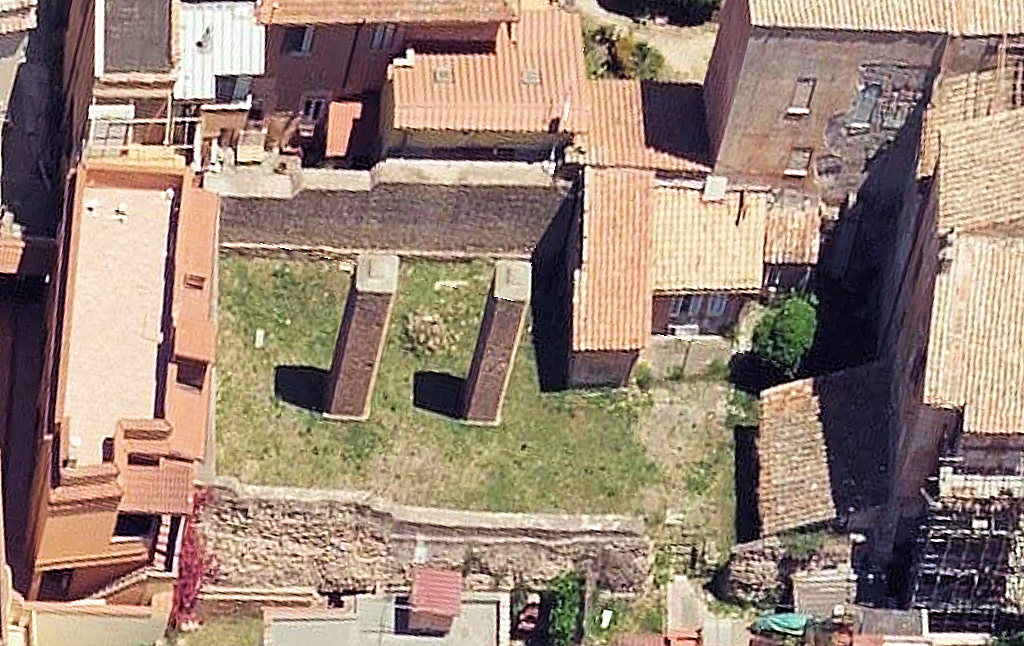Isola Sacra - The area of the salt pans - The Casalone del Sale
To the north-east of the borgo of mediaeval Ostia were salt pans (so not on the Isola Sacra, but on the other side of the Tiber). They are mentioned by Livius in relation to the earliest history of Ostia. The area of the salt pans is today completely built up and the boundaries of the ancient salt pans are not known precisely. The salt production took place in shallow ponds, where the sun evaporated most of the water.

Map of the area by Giovanni Amenduni from 1884, with the location of the salt pans ("saline").

Modern salt pans in Guérande, France. Photo: Wikimedia, Demeester.
To the west of the salt pans a few remains of buildings have been excavated below and between the modern houses. Of special interest is the Casalone del Sale, which was built on top of Roman remains. The building is not very far to the north of the borgo (in the area demarcated by Via del Castello, Via Morcelli and Via delle Saline), near the ancient Tiber bank. The oldest remains have here been dated to the first half of the first century AD. There were various modifications, until the Severan period. From about 250 AD the horrea were no longer used. On top are remains of some structure from the sixth century and late-antique burials. In the early 16th century a storage building for salt, the so-called Casalone del Sale, was built on top. The warehouse lost its function when the Tiber changed its course in 1557. Around 1570 a new warehouse was built on the Tiber bank to the west. This new building is known as the Casone del Sale. The museum of Ostia was installed in this Casone.

The Casalone with two high brick piers in the centre, seen from the west. Photo: Bing Maps.

The road to the south of the Casalone, seen from the west. Note the slope of the road, which rises from the former bed of the Tiber. Photo: Google Maps.